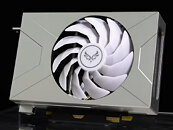
Sparkle Rep Mentions Arc Xe2 "Battlemage" Graphics Card Configured with 24 GB VRAM
Not long after Intel's launch of the Arc Xe2 "Battlemage" B580 12 GB graphics card design, insiders started generating noise about potential spin-offs bound for release in 2025. In theory, the speculated "B580 24 GB" variant could arrive as a workstation-oriented discrete graphics solution—possibly lined up as a next-gen entry within Team Blue's Arc Pro family. Three mysterious BMG (aka "Battlemage") PCI identifiers turned up at the end of January; sending online PC hardware debates into overdrive; one faction believed that Team Blue was readying fabled productivity-focused B-series cards—complete with enlarged pools of GDDR6 VRAM. Apparently, Sparkle's Chinese branch has provided comment on newer rumors—from March, according to VideoCardz. The Taiwanese manufacturer is a key Intel board partner in the field of Arc GPU-based graphics card products—across gaming and professional desktop lines. Unfortunately, the company's head office (in Taiwan) has dismissed "official" claims about a May/June launch of an unnamed 24 GB model. Sparkle's Chinese social media account engaged with members of the PC hardware community, and outlined an "original plan" to release something new within the second quarter of 2025—apparently the incoming card is "still being arranged."
























































































